Curtains can be sewn either flat or with fullness. While the visual aspect is important, opting for fullness and pleats significantly affects the functionality of the drapes as well. Therefore, take your time to select the desired amount of fullness and type of pleat that aligns best with the budget, look and style of your venue or event.
TABLE OF CONTENTS
What is curtain fullness?
You can hang your curtain flat or with pleats, meaning that the width of the fabric and the width of the curtain are two different things. Curtain fullness or curtain gather indicates the additional fabric that is needed to cover the total width of the opening.
A flat drape has the same width as the opening and no fullness. To achieve 50% fullness, you’ll require 1.5 times the fabric width used for a flat curtain. 100% fullness equals double that width.
For example: a drape of 10 meters wide with 100% fullness requires a fabric width of 20 meters. Through pleating, the ShowTex workshop reduces the final curtain width to 10 meters with 100% fullness.
Want to find out even more about flame-retardant fabrics, curtain openings and finishes?
Download your free copy of the ShowTex Theatre eBook
|
0% FULLNESS
OR FLAT CURTAIN
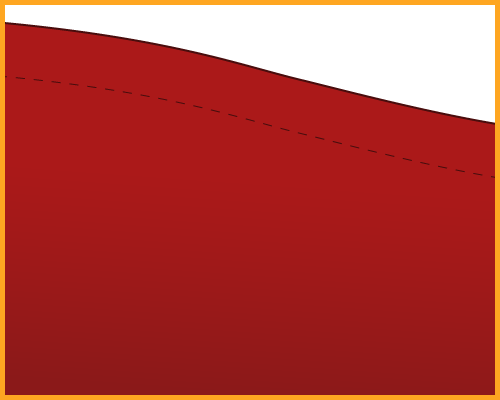 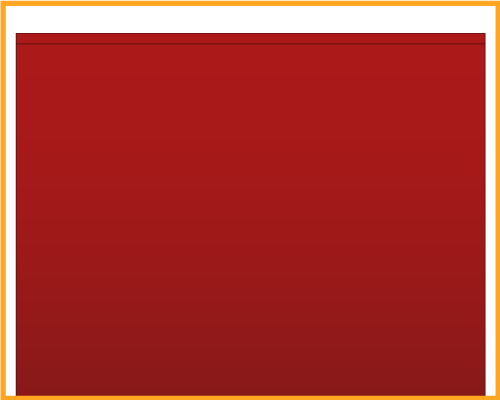
Required fabric width
= desired visible width
E.g. 10m wide drape
with 0% fullness:
required fabric width
= 10m.
|
50% FULLNESS
BOX PLEATS
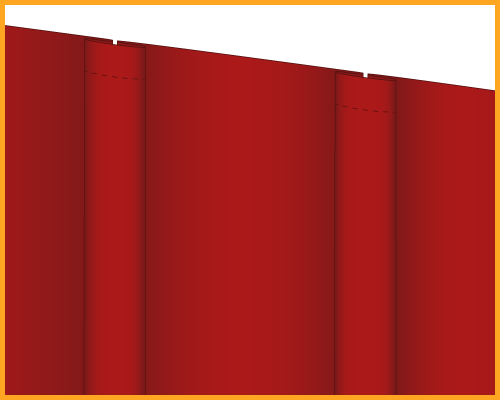 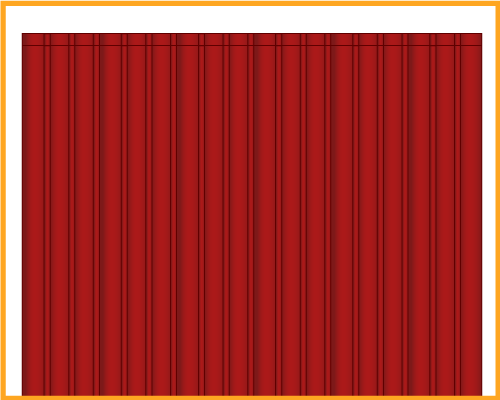
Required fabric width
= desired visible width
x 1.5
E.g. 10m wide drape
with 50% fullness:
required fabric width
= 15m.
|
75% FULLNESS
BOX PLEATS
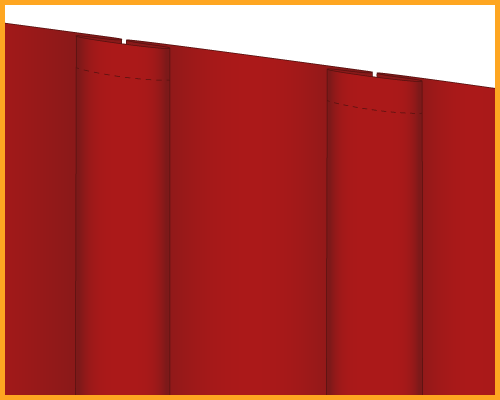 
Required fabric width
= desired visible width
x 1.75
E.g. 10m wide drape
with 75% fullness:
required fabric width
= 17.5m.
|
|
100% FULLNESS
BOX PLEATS
 
Required fabric width
= desired visible width
x 2
E.g. 50m wide drape
with 100% fullness:
required fabric width
= 100m.
|
200% FULLNESS
BOX PLEATS
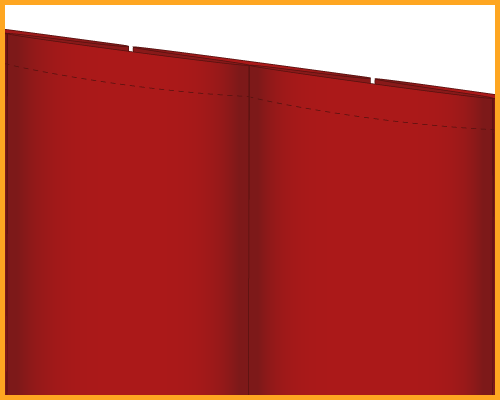 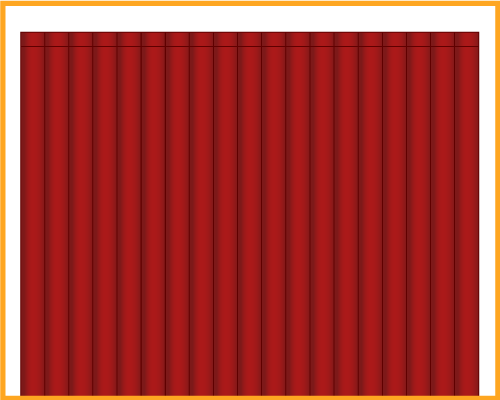
Required fabric width
= desired visible width
x 3
E.g. 50m wide drape
with 200% fullness:
required fabric width
= 150m.
|
Curtain fullness & pleating
Depending on how big your pleats need to be, you require more or less fullness. Usually, a curtain that is 100% full has pleats of about 15cm deep. The fuller your drape, the richer the pleats.
Pleating is quite common in fabric confection. Among other applications, pleated curtains serve as majestic prosceniums or masking drapes in theatres, add a stylish touch to event venues or allow trade show booths to stand out.
The effect of curtain pleats
The impact of pleated curtains extends beyond the visual appearance of a room, as they also contribute to light and sound management. For example, velvet main curtains in theatres usually have 100% pleating because of the full, rich look it gives. For sheer drapes, 200% fullness can increase the opacity of the fabric, while acoustic fabrics with fullness absorb more sound.
Eventually, the desired look, use and budget will determine the amount of fullness.
Types of curtain headings
There are many different curtain headings to choose from for the final look of your drapes. Check out the different pleat styles used in the ShowTex sewing workshops:
|
FLAT CURTAIN
 
A drape with 0% fullness.
- Cost-friendly (no extra fabric needed)
- Mostly used for masking, projection and cycloramas.
- Still possible to tie a flat drape in fullness.
|
TIED IN FULLNESS PLEAT
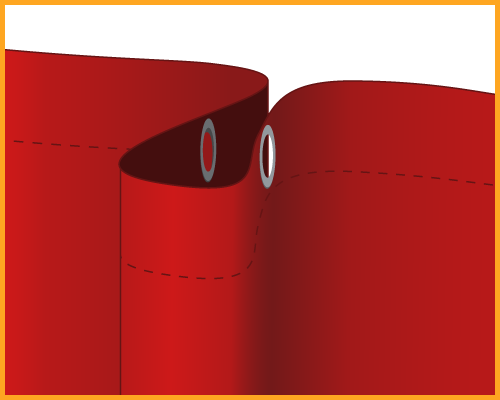 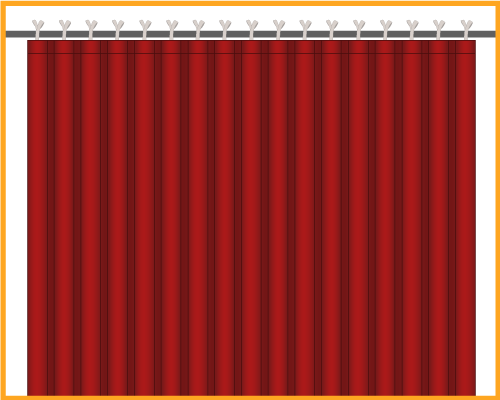
Requires 40% to 200% extra fabric width.
- Most standard pleat type.
- Grommets punched at variable distances.
- One runner holds two grommets to attach the drape evenly.
- Drapes hang underneath the rail.
- Industrial look, as grommets, rail and runners are visible.
- Perfect choice for stage backdrops and event spaces.
|
|
RIPPLED PLEAT
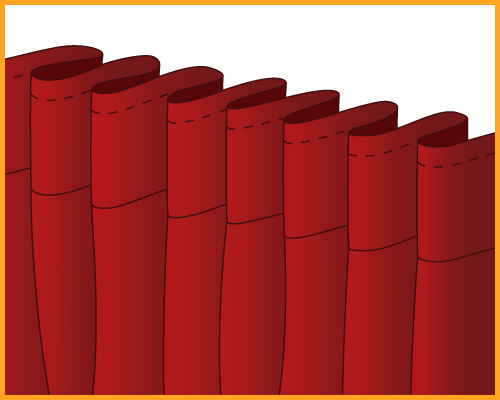 
Requires 10% to 800% extra fabric width.
- Ripples are created by manually pulling a cord.
- The tight fringe at the top creates a fabric that hangs with irregular, rolling folds.
- Flexible amount of fullness by pulling the cord more/less.
- Always combined with curtain hooks.
- Adds an organic, playful touch to your curtain.
|
SHIRRED PLEAT
 
Requires 20% to 200% extra fabric width.
- Ripples formed by stitching elastics to the fabric at regular intervals.
- Slightly stretchy but less flexible than rippled pleats.
- Small, organic folds.
- Quick and simple way to create pleated drapes.
- For casual settings and events or special shapes like tents, arches or sloping tops.
|
|
WAVE PLEAT WITH FIXED GLIDERS/RUNNERS
  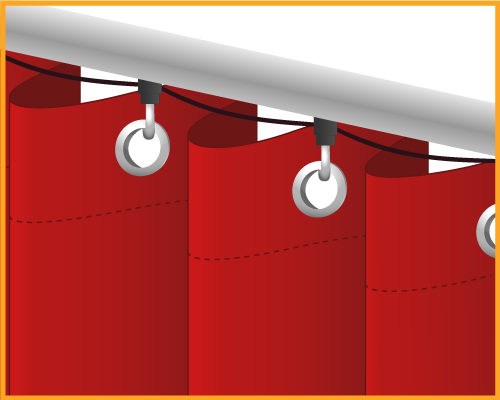
Picture 1: gliders – Picture 3: runners
Requires 50% to 300% extra fabric width.
- Popular and versatile choice.
- Choose fixed gliders for lightweight fabrics, or fixed runners for heavier curtains.
- Track gliders are fixed at set distances with a hidden cord, creating evenly spread fabric waves below the rail. Runners are installed with a hidden chain.
- Budget-friendly, as waves remain even with less fabric.
- Often used in interior settings like offices.
- Tight and regular pleats ensure deep waves and designer look.
- Curtains stay wrinkle-free for longer as these pleats keep their shape when opening/closing.
|
|
EASYDRAPE PINCH PLEAT
 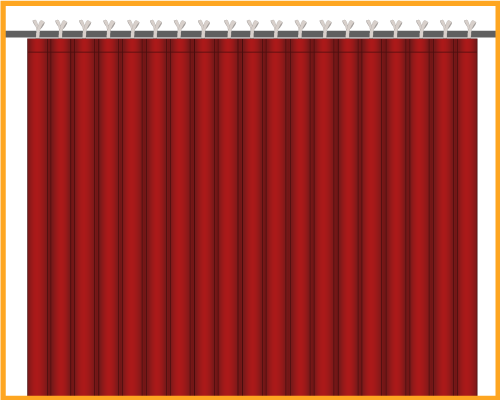
Requires 20% to 100% extra fabric width.
- Hook & loop finishing on the back of the fabric for static suspension.
- Cost-effective, thanks to its simple design requiring little extra fabric.
- Optionally add curtain hooks or eyelets for more suspension options.
- Mostly used in temporary EasyDrape setups at events or venues.
|
PINCH PLEAT / SINGLE PLEAT
 
Requires 20% to 100% extra fabric width.
- High-end finishing with simple and sleek look, obtained by buckram, curtain hooks or eyelets.
- Cost-effective, thanks to its simple design requiring little extra fabric.
- Fits any curtain weight, even heavier velours or blackout textiles.
- Often used in interior settings like hotels, offices, wedding venues.
|
|
BUTTERFLY PLEAT / DOUBLE PLEAT
 
Requires 100% to 200% extra fabric width.
- Creates a classic, formal look.
- By joining two pinched pleats, these drapes look very sumptuous.
- Works best with supple fabrics that are light or medium weight.
- Works for royal and historic curtains.
|
TRIPLE PLEAT
 
Requires 150% to 300% extra fabric width.
- Top-notch luxurious look.
- By joining three pinched pleats, these fabrics look even more voluminous than butterfly pleated drapes.
- Mostly used in classic interior design applications and for historic curtains.
|
|
INVERTED PLEAT / REVERSE PINCH PLEAT
 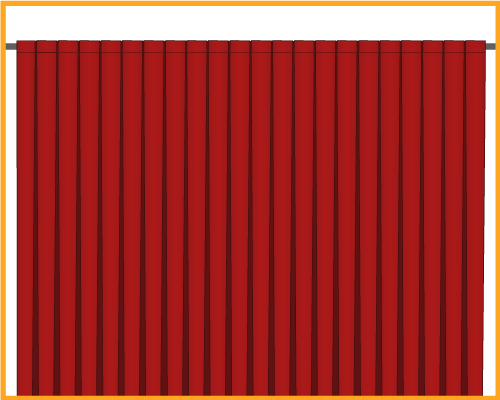
Requires 50% to 100% extra fabric width.
- Updated look of the standard pinch pleat.
- Tailored but modern appearance.
- Allows the drape to open with a harmonica effect.
- Takes up slightly less space when stored, compared to pinch pleats.
- Only possible for curtains that hang underneath the track.
|
KNIFE PLEAT
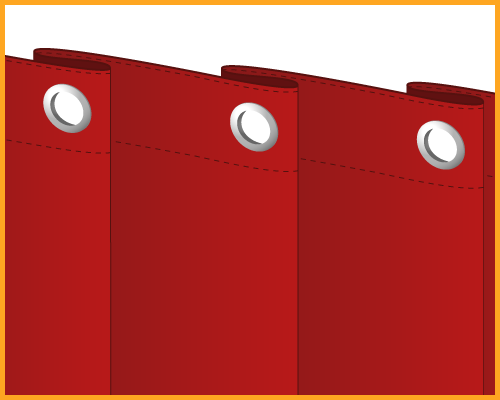 
Requires 50% to 200% extra fabric width.
- Deluxe pleat type with neat look.
- Clean and static drape with pleats that are perfectly straight.
- Optimal sound and light isolating qualities with 200% fullness.
|
|
FULL BOX PLEAT
 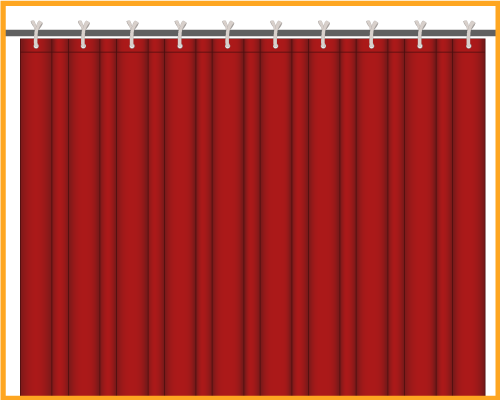
Requires 50% to 200% extra fabric width.
- Common pleat type for theatre drapes.
- Lush curtain with naturally flowing pleats (less static).
- The more fullness, the greater its sound and light isolating qualities.
- Pleats facing the front are slimmer than those going to the back.
|
INVERTED BOX PLEAT
 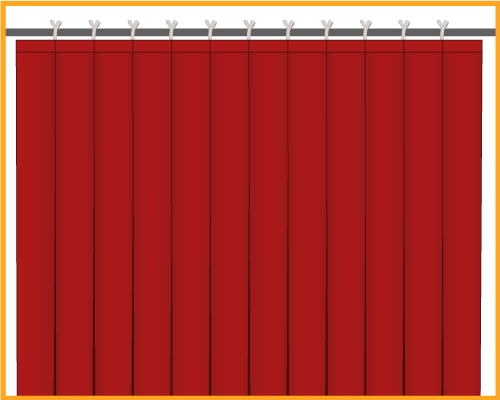
Requires 50% to 200% extra fabric width.
- Reversed Box Pleat, resulting in different aesthetics.
- Lush curtain with flat, clean top and pleats that flow naturally (less static).
- Pleats facing the front are wider than those going to the back.
- The more fullness, the greater its sound and light isolating qualities.
|
Got a clear vision on the pleats and fullness you need? Or on the lookout for more personalised advice on your performance, venue or event decoration?
Get in touch to discuss your project
